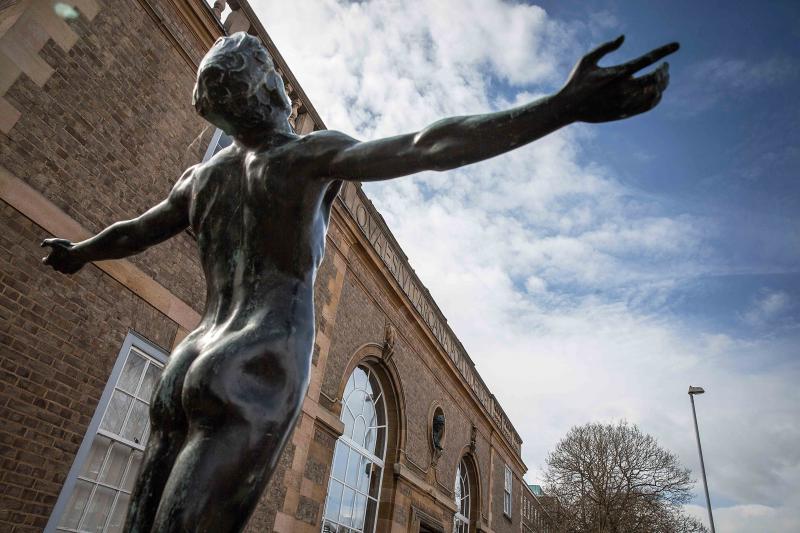 |
| "Youth" by Kathleen Scott |
My daughter and I took an Easter break outing to
The Polar Museum at the
Scott Polar Research Institute last week. The Institute takes its name from
Robert Falcon Scott, who arrived at the South Pole on 17 January 1912 only to find that the Norwegian explorer,
Roald Amundson, had got there 34 days before him. The bodies of Scott and his companions were found on their return journey just 11 miles from a cache of food and supplies. Scott's
diary, discovered at the site, chronicles the ill-fated expedition's harrowing final days, and concludes with the plea "for God’s sake look after our people."
It was a bit odd, I thought, to name a research institute after an
explorer who came in second and who did not live to tell the tale. But when the diary was published it caused a sensation. So much money poured in to "look after our people" that some was set aside
to found the institute. The story about the heroic explorers was u
sed to drum up support for the first world war. Perhaps it is no coincidence that the Scott Polar Research Institute was built right beside the church of "
Our Lady and the English Martyrs" or that a sculpture donated to the institute by Scott's widow, Kathleen, looks rather like a crucifix.
Scholars debate why Scott failed and Amundson succeeded, but the museum keeps it simple, explaining that Amundson beat Scott to the South Pole because he had only
one goal--to be the first one to reach the South Pole--and he pursued it
single-mindedly. I'm sure there's a lesson there somewhere...
(In case you are wondering, s. enjoyed sitting by the Cam and feeding swans much more than the museum.)

